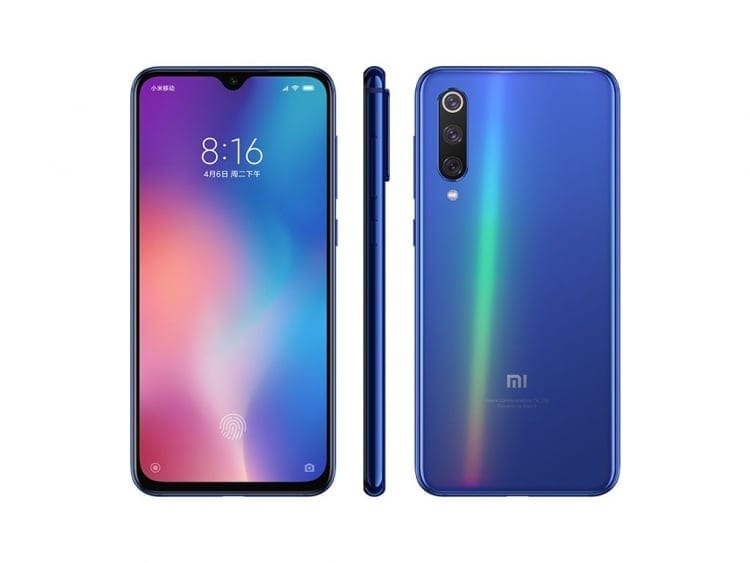Among the latest and flagship phone that was launched this month are the Samsung Galaxy S10 and the Xiaomi Mi 9 smartphone. Both phones are coming from a respectable brand and they feature a beautiful body design and a powerful processor. We will be looking at the full comparison between the Samsung Galaxy S10 and the Xiaomi Mi 9 to see who one will perform better.
Samsung Galaxy S10 Xiaomi Mi 9Samsung Galaxy S10 VS Xiaomi Mi 9- Design Comparison
On the body, the Samsung Galaxy S10 is built with Glass on the back and a metal frame.
The handset also has an IP68 rating which means it’s both dust and water resistant. It measures 149.9 mm x 70.4 mm x 7.8 mm in dimensions and weighs 157 gram. The Xiaomi Mi 9 is built with the combination of Aluminum Alloy and glass. It has body dimensions of 6.20 in x 2.94 in x 0.30 in and weighs 173 gram. Both phones have an on-screen fingerprint sensor and they are shipped in multiple colors. The Samsung Galaxy S10 is available in Black, Blue, Green, White, Yellow and Pink colors, while the Xiaomi Mi 9 is available in Lavender Violet, Ocean Blue, Piano Black, and Transparent colors.
Samsung Galaxy S10 VS Xiaomi Mi 9- Display Comparison
The Samsung Galaxy S10 has a screen display size of 6.1-inches QHD+ under Dynamic AMOLED capacitive touchscreen with a resolution of 3040 x 1440 Pixels and 550 PPI density, while the Xiaomi Mi 9 has a screen size of 6.39 inches FHD+ under Super AMOLED Capacitive Touchscreen with a resolution of 1080 x 2340 Pixels and 403 PPI density. Both phones have display protection of corning gorilla glass and they will also offer clear visuals to users. The Samsung Galaxy S10 has a punch hole screen with a higher screen to body ratio, whereas the Xiaomi Mi 9 has a teardrop notch with large screen size.
Samsung Galaxy S10 VS Xiaomi Mi 9- Camera Comparison
The Samsung Galaxy S10 has a triple rear cameras that consist of 12 Megapixels (WD) f/1.5 + 12 Megapixels (TP) f/2.4 + 16 Megapixels (UW) f/2.2 with dual LED flash and a front facing camera of 10 Megapixels f/1.9, while the Xiaomi Mi 9 has a triple rear cameras of 48 Megapixels + 16 Megapixels + 12 Megapixels with dual LED flash and a front camera of 20 MP with f/2.0. The Xiaomi Mi 9 has the point on paper and may likely take better photos than it’s rival.
Samsung Galaxy S10 VS Xiaomi Mi 9- Performance Comparison
On the hardware, the Samsung Galaxy S10 has Exynos 9820 Octa or Qualcomm Snapdragon 855 SDM855 chipset with an octa-core processor that clocked at a speed of 2.7GHz and Mali-G76 MP12 or Adreno 640 for graphics, while the Xiaomi Mi 9 has a Qualcomm Snapdragon 855 chipset with an octa-core processor that clocked at a speed of 2.84 GHz and Qualcomm Adreno 640 for graphics. The Galaxy S10 has 8GB RAM with internal memory of 128GB, 512GB which is expandable via micro SD card, while the Xiaomi Mi 9 has 6GB/8GB RAM with onboard storage of 128GB/256GB which is not expandable.
Both phones have support for 4G LTE network and they are also powered by Android 9.0 Pie operating system.
Samsung Galaxy S10 VS Xiaomi Mi 9- Battery & Price Comparison
The Samsung Galaxy S10 has a nonremovable battery capacity of 3400 mAh with fast and wireless charging technology, while the Xiaomi Mi 9 has a nonremovable battery capacity of 3300 mAh with fast and wireless charging technology as well. On the price, the Samsung Galaxy S10 is priced at $899, while the Xiaomi Mi 9 will cost around $446.
Buy Xiaomi Mi 9 & Pay On Delivery: View Offer On GearBest
Our Verdict:
On the overall, the Samsung Galaxy S10 will slightly outperform it’s rival. The phone has a Bixby assistance with both dust and water resistant, while the Xiaomi Mi 9 has an impressive cameras set-up and it’s more affordable. So the Xiaomi Mi 9 will make a wise buy.

